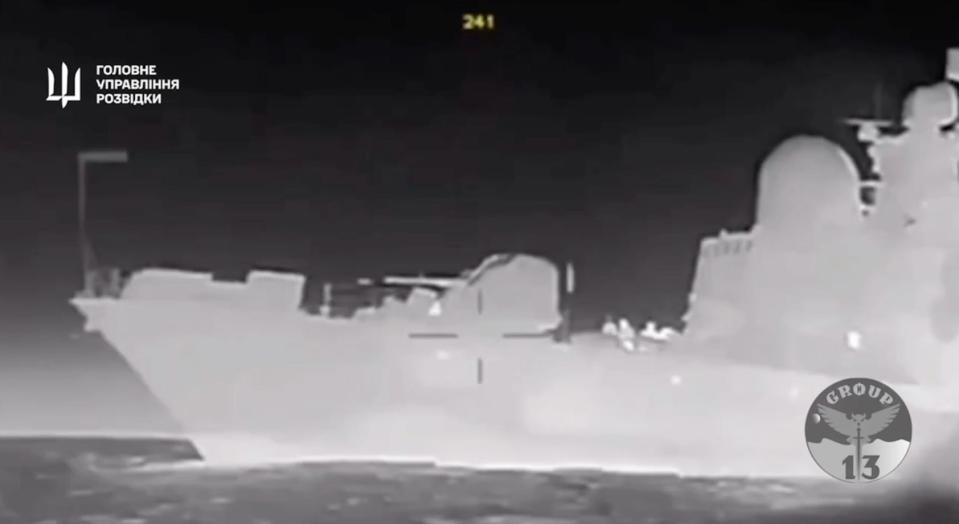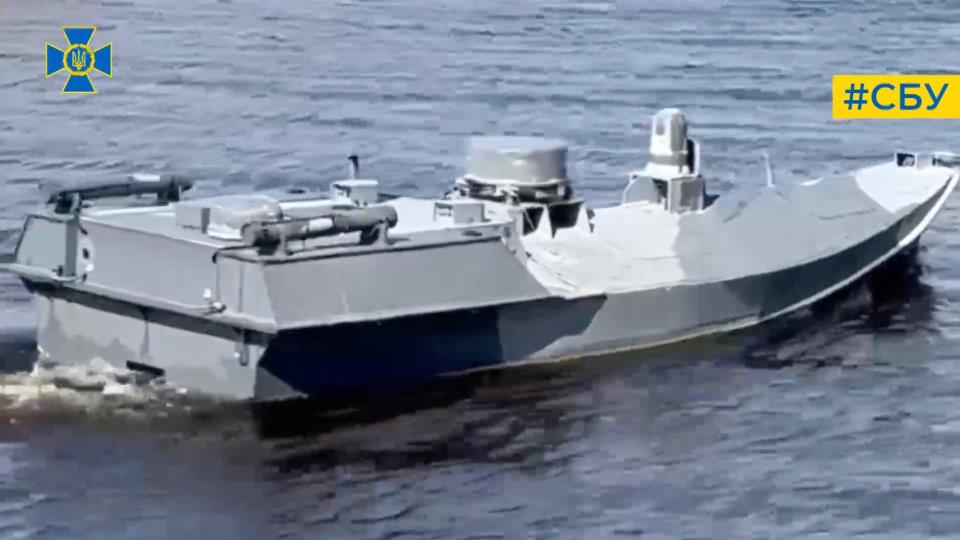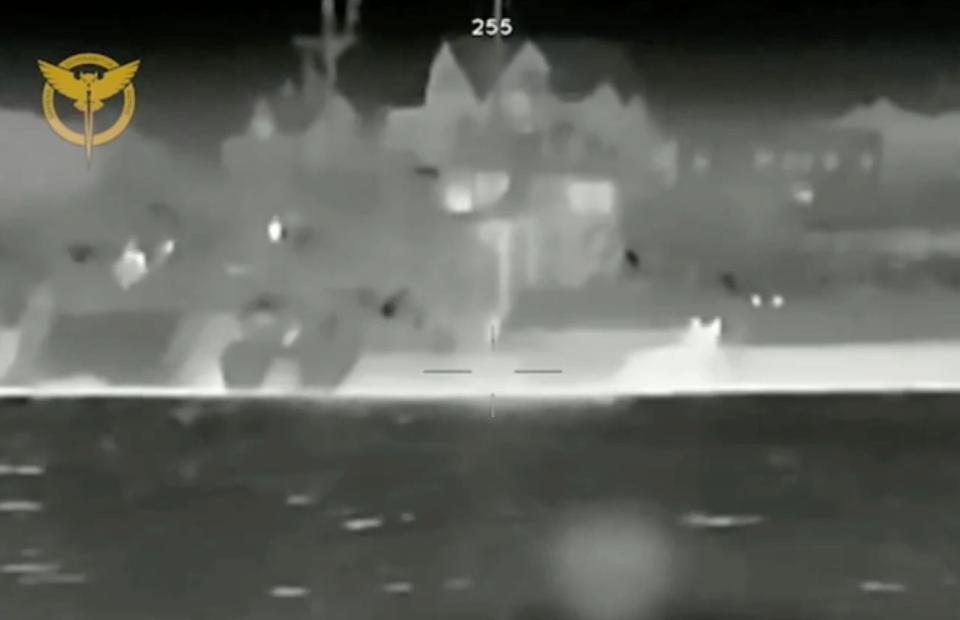Ukraine made the naval drones sinking Russian warships 'deadlier' by arming them with bigger warheads, general says
Ukraine has used naval drones to wreak havoc on Russia's Black Sea Fleet.
These systems were introduced in 2022 and have been used in a number of attacks on Russian vessels.
A Ukrainian general said the drones have been upgraded over time and outfitted with larger warheads.
Exploding drone boats, one of Ukraine's more innovative weapons as it battles Russia's Black Sea Fleet without a proper navy, have become even bigger threats over time.
Ukrainian naval drones have been used to damage and sink Russian warships, as well as target infrastructure, since their introduction in 2022. The hits have been increasingly devastating.
A general in the Security Service of Ukraine, or SBU, said these systems have received major upgrades over the course of the war and are now "stronger, more efficient, and deadlier" than they were before.
"In 2024, we have completely different parameters for drones," Brig. Gen. Ivan Lukashevych, whose team has carried out a handful of the drone boat operations, said in translated remarks shared with Business Insider.
"Especially compared to the ones we first tested in October 2022 to attack Russian warships in the Sevastopol Bay," he said. "We realized the flaws with those first drafts, but the manufacturer could not foresee these things, because at that time there was no expertise in the world for such highly technical drones."

To compensate for its lack of a navy, Ukraine has sought to develop what it calls "the world's first fleet of naval drones." That effort is centered around an uncrewed surface vessel, or USV, called Sea Baby. Kyiv is attempting to build up an arsenal of these systems and recently launched a fundraising initiative to secure donations to purchase dozens of additional Sea Babies for the SBU.
These drones have been deployed in numerous operations around the Black Sea, damaging and destroying Russian warships — including one just a few weeks ago — and even hitting a key bridge that links the occupied Crimean peninsula with mainland Russia.
Experts have said the cheap and remotely operated Sea Babies give Ukraine an asymmetric advantage against Russia, which has been unable to consistently stop them. And while that hasn't stopped Moscow from trying to adapt to this threat, Kyiv is staying ahead by giving the drones upgrades.

The first modification to the Sea Babies that Lukashevych presented was an increase in warhead size; according to the Ukrainian government, the drones are capable of delivering a heavy explosive payload of nearly 1,900 pounds. The next notable upgrade was "an improvement in seaworthiness," ensuring they could sail in waves of nearly five feet.
The third improvement was making sure the Sea Babies could travel a distance twice as far as that between Odesa, a port city in southern Ukraine, and Sevastopol on Crimea's southwestern coast. In a straight line across the Black Sea, it is roughly 190 miles between the two cities. The drones now have a range of over 600 miles, putting a lot more Russian targets in reach.
Ukraine also "wanted to make them reusable, to be both cheaper and more efficient," Lukashevych said.

Beyond physically upgrading its Sea Baby drones, the SBU also uses multiple locations to manufacture and test the drones. There are constant relocations, and special operations are even carried out from different command posts in different areas — all to stay ahead of the Russians.
The naval drone attacks have ultimately helped Ukraine batter Russia's Black Sea Fleet, even forcing some of it to relocate farther away from its headquarters in Crimea, and open up a maritime corridor in the region.
Last month, Ukraine said it had destroyed or damaged dozens of Russian warships since the full-scale invasion began more than two years ago, and as of early this month, Ukraine had effectively destroyed about a third of the Black Sea Fleet.
"If there is a threat," Lukashevych said, "we will definitely find it, localize it, and destroy it."
Read the original article on Business Insider

